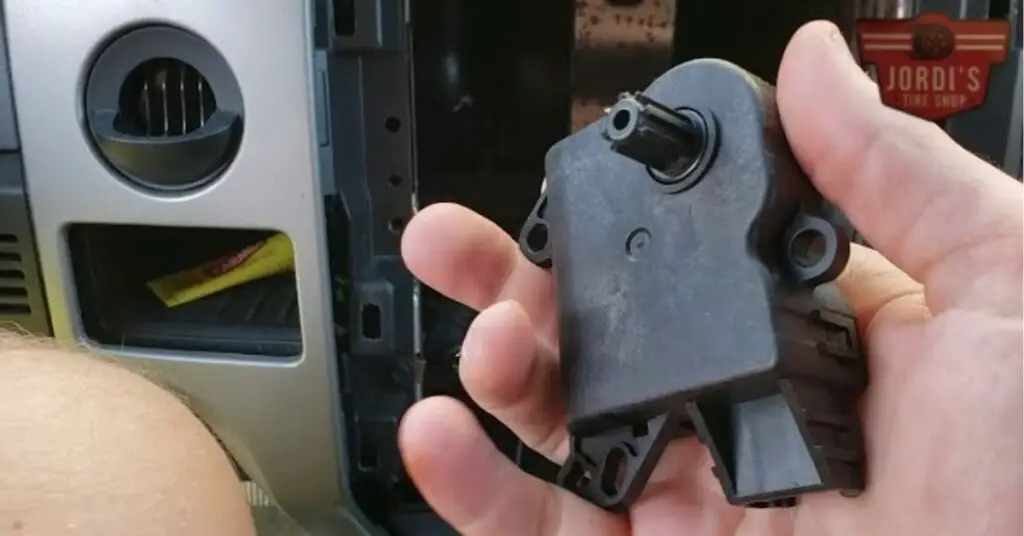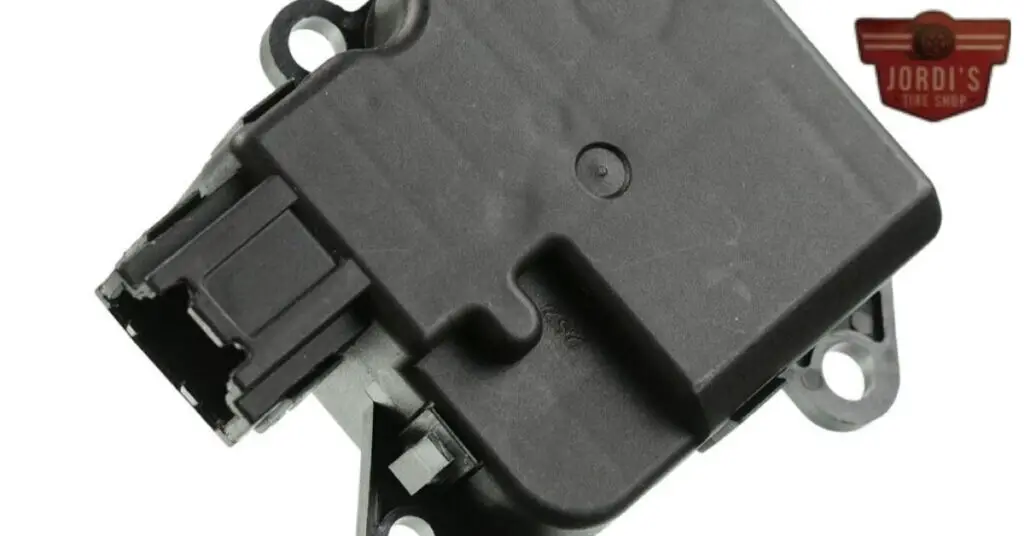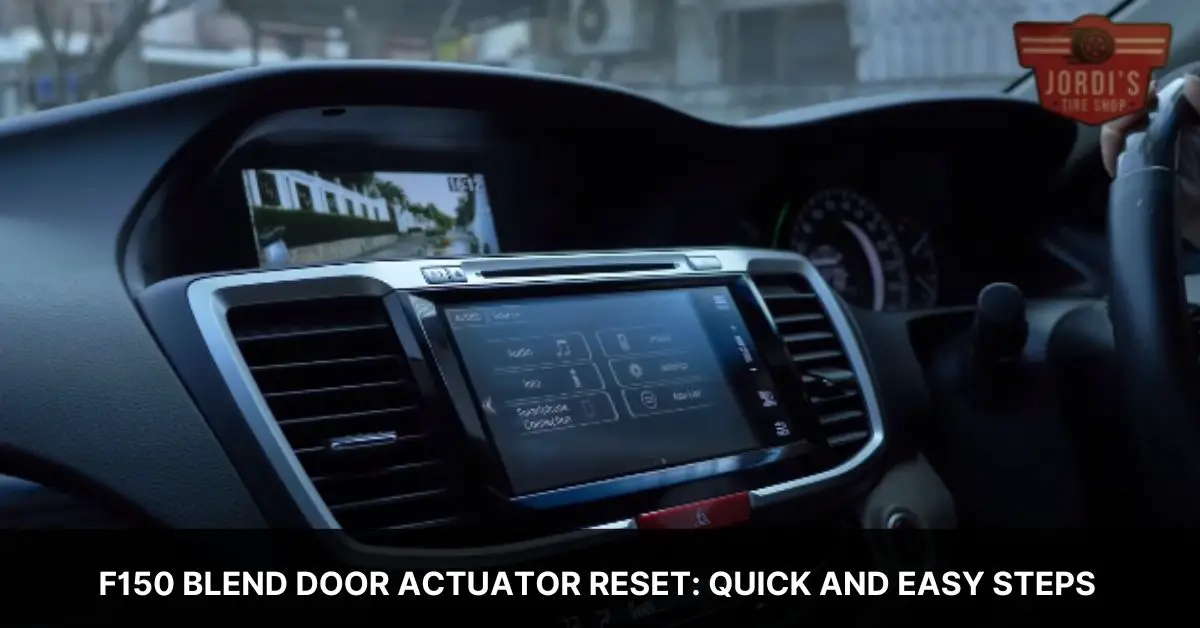Ever been on a summer drive in your F150, only to have your peace shattered by a loud clicking noise when you turn on the AC? Or perhaps, on a chilly morning, you’ve cranked up the heat, but all you got was a symphony of clicks and cold air? You’re not alone. These are common symptoms of a faulty blend door actuator.
This small but mighty component controls the flow of air in your vehicle’s HVAC system. When it’s working, you’re comfortable. When it’s not, you’re left shivering or sweating. Understanding how to reset your F150’s blend door actuator can save you a trip to the mechanic and keep your ride comfortable year-round.
Understanding the F150 Blend Door Actuator
Embarking on a journey to comprehend the F150 blend door actuator starts with understanding its role and the common problems associated with it. This doesn’t just equip you with the knowledge you need but strengthens your ability to troubleshoot issues effectively.
Role of the Blend Door Actuator in F150
At the heart of the F150’s heating, ventilation, and air conditioning (HVAC) system lies the blend door actuator. It’s more than just another component; it’s the linchpin that regulates the flow of air. Depending on your selection, it channels either hot or cold air into the cabin, ensuring you’re comfortable no matter what the weather outside. The actuator shifts the blend door, controlling the mix of warm and cold air. It’s a function that often goes unnoticed until something goes awry.
Common Problems with F150 Blend Door Actuator
Just like any other part, the F150 blend door actuator is not immune to issues. The first sign of trouble usually comes in the form of a constant clicking or popping noise when you turn on the AC or heating system. This sound, as bothersome as it may be, is the actuator trying to shift the blend door.
Another common problem surfaces when the heating system starts blowing cold air. If you’ve ever found yourself shivering in the cab of your F150 even though cranking up the heat, it’s likely a sign the actuator can’t move the blend door to the right position — a consequence of losing some gear teeth or not having enough power.
Knowing these common problems equips you with the ability to identify the signs of a failing blend door actuator. It reassures that you’re on the right path to making an well-informed choice, whether to reset the actuator or seek professional help, thereby avoiding an uncomfortably cold or warm cab and unnecessary costly repairs. After all, a little bit of knowledge goes a long way in maintaining the smooth running of your F150 HVAC system. By doing so, you prevent surprises and ensure your comfort on the road.
Guide to Resetting the F150 Blend Door Actuator

Troubleshooting and rectifying minor HVAC issues in an F150 can be a straightforward routine if you’ve grasped the hallmark signs and developed the knack for resetting the blend door actuator.
Signs You Need to Reset Your Blend Door Actuator
Recognizing problematic actuator symptoms is half the battle won. You may experience a loud clicking or popping noise when captivating the AC or heater, a clear indication of a maladjusted blend door actuator. Subtle hints like consistent cold air even when the heat is turned up could also suggest the actuator isn’t functioning correctly. Frequent clicking noises followed by the lack of warm air during chilly periods implies the actuator is aiming but failing to correctly position the blend door.
Steps Involved in the Reset Process
Conducting a reset entails careful execution of steps. Begin by turning off your ignition, an essential step to ensure the part being installed isn’t incorrectly positioned. Remove fuse number 15 or 46 (depending upon your truck model) and wait for a minute before reinstalling. Next, turn the ignition key to ‘in’ position, but don’t begin the engine for at least 30 seconds. Now, you’re ready to restart your F150, following which you can carefully adjust the controls and ascertain the normal operation of both heat and AC.
Potential Challenges and Answers While Resetting
But, resetting isn’t always smooth sailing. You may encounter stubborn wire harness plugs on the back of the center stack, which can be troublesome. Slow pace and exercise care when handling these connections. In instances where the blend door has been clicking for an extended period, a simple recalibration by pulling the fuse might not solve the problem. In such cases, gear teeth may have worn out, necessitating replacement, which can be done smoothly if there’s access to informative videos and helpful online forums.
Remember, knowledge is power, and being well-equipped with the understanding of your F150’s blend door actuator can save you valuable time and a lot of nerves.
Importance of Regular Maintenance

Maintaining the blend door actuator in an F150 is critical for your vehicle’s HVAC system. A properly functioning actuator ensures comfort by regulating the flow of air in your vehicle.
Preventing Blend Door Actuator Issues
Prevention of blend door actuator problems begins with early detection. Pay attention to unusual noises, such as clicking or popping, when adjusting the AC or heat. These sounds may indicate a potential failure of the blend door actuator. Another indication is the loss of heat or cool air even though adjusting the temperature settings. In such cases, it’s likely the actuator isn’t efficiently controlling the blend door position.
Regular maintenance and checkups can aid in early identification of issues. Consistent maintenance enhances the lifespan of the actuator, so reducing the likelihood of costly repairs in the future.
Maintenance Tips for Prolonged Actuator Life
To prolong the life of your blend door actuator, consider these simple and practical tips:
- Regular Inspection: Inspect the blend door actuator periodically. This allows you to spot and solve small issues before they escalate.
- Gentle Use: Avoid extreme adjustments of the temperature control knob. Frequent abrupt changes might strain the actuator gears, leading to excessive wear and tear.
- Professionally Service: It’s worthwhile having a professional inspect and service your vehicle’s HVAC system regularly. They may detect problems that you’ve overlooked.
- Follow Manufacturer’s Guidelines: Adhere to the manufacturer’s recommended maintenance schedule. The guidelines are designed to keep your car in excellent condition for as long as possible.
- Use Genuine Parts: If your blend door actuator needs replacement, invest in genuine parts. They tend to offer optimal performance and longevity.
By maintaining regular checks and accommodating these preventive measures, you can ensure the optimum performance of your blend door actuator. As a result, your comfort while driving stands improved, and you can avoid the inconvenience of unexpected repairs.
Case Studies on F150 Blend Door Actuator Reset

Reflecting on experiences shared by fellow F150 owners, it’s evident that understanding blend door actuator function, issues, and fixes can save time, money, and discomfort.
Let’s jump into a real scenario. One case involves a 2011 F150 screw model, equipped with manual AC controls. During the summer, the owner noticed a loud clicking noise emanating whenever the AC was engaged. Research led to the conclusion that the culprit was a blend door actuator issue. The noise ceased when the control was slightly withdrawn from the full cold setting, indicating an issue with the actuator’s operation.
Another season, the owner turned the temperature knob to full heat due to the chilly morning ambiance and was greeted with more clicking, and another unfortunate surprise – no heat, just cold air. From this, it was deduced that the blend door actuator may have stripped gears or lacked the power to shift the blend door from its position.
The solution? Reset the blend door actuator. Turning off the ignition, removing and replacing exact fuses, and waiting brief moments before a restart is the usual procedure. But, if the actuator gears are stripped or functionally insufficient, replacement becomes necessary. Genuine parts from manufacturers are advised for this process.
Be it an unclear YouTube video or procedurally demanding column shift model, handling blend door actuator issues can be a challenge. But, considering the collective experiences and answers posted by F150 owners, understanding how to reset or replace the blend door actuator can transcend from a challenging job to a manageable job.
Remember, early detection, regular inspections, adherence to manufacturer guidelines, and timely maintenance can enhance the lifespan of a blend door actuator, improve your F150 experience, and most importantly, help avoid unexpected repairs. Knowledge is power, and knowing how to navigate minor HVAC issues goes a long way in maintaining the comfort of your vehicle.
DIY vs Professional Help for Blend Door Actuator Reset

An F150 owner will encounter various scenarios that require a blend door actuator reset. Whether an individual should undertake the task themselves or seek professional help directly correlates with the complexity of the issue and the owner’s competency in performing mechanical tasks.
When to Consider Professional Help
Different situations may warrant considering professional assistance to reset the blend door actuator. If you’re experiencing persistent, unresolved issues even though your reset attempts, it’s time for expert intervention.
- Persisting Problems: If clicking noises continue or if the HVAC system still blows cold air when on the heat setting, even though performing the reset correctly, a mechanic’s expertise becomes vital. These signs may indicate worn out gear teeth.
- Complex Installation: Although many owners have successfully installed the blend door actuator themselves, anyone unacquainted with automotive DIY might find the process challenging. Wrestling with wire harness plugs on the back of the central stack, for instance, can prove problematic.
- Time Constraints: Actuator resets and installations can take a new DIYer up to three hours. For those busy or preferring a swift resolution, enlisting professional help conserves time and effort.
- Guarantee of Work: Hiring a mechanic comes with a service guarantee. If the issue persists, they’ll revisit their work, often without additional charges.
It’s pivotal to weigh the cost of professional services against spending time troubleshooting the actuator. Remember, an incorrect DIY repair can exacerbate the problem, potentially leading to more costly fixes.
Conclusion
So there you have it. You’re now equipped with the knowledge to tackle blend door actuator issues in your F150. You’ve learned its role in your vehicle’s HVAC system, how to identify signs of trouble, and the steps to reset it. You’re aware of the importance of regular maintenance and the potential challenges you might face during the reset process.
You’ve also seen real-life scenarios of F150 owners resolving their actuator issues. This should give you confidence in dealing with similar problems. Plus, you can now make an well-informed choice about whether to take the DIY route or seek professional help.
Remember, understanding your vehicle’s blend door actuator can save you time, money, and ensure a comfortable driving experience. So next time you hear that annoying clicking noise or feel cold air when you’ve turned on the heat, don’t panic. You’ve got this. Keep your F150 running smoothly and comfortably with your new-found knowledge.
Related Posts:
- Best Winter Tires for Honda Civic: Top Picks for Safe and Smooth Driving in Cold Weather
- Check Engine Light Goes Off By Itself: What It Means and What to Do
- Difference Between Tire and Wheel: A Simple Explanation
- Volt Propulsion Power Reduced: Causes and Solutions
- F150 Blend Door Actuator Reset: Quick and Easy Steps
- Supercharged Scat Pack: The Ultimate Muscle Car Upgrade
- Sys Off to Save Battery: Simple Tips to Extend Your Device’s Battery Life
- Suspension Tuning Car: Tips for Improving Your Ride Quality
- Gear Ratio by VIN: How to Find It for Your Vehicle
- Engine Wash: How to Keep Your Vehicle Running Smoothly

